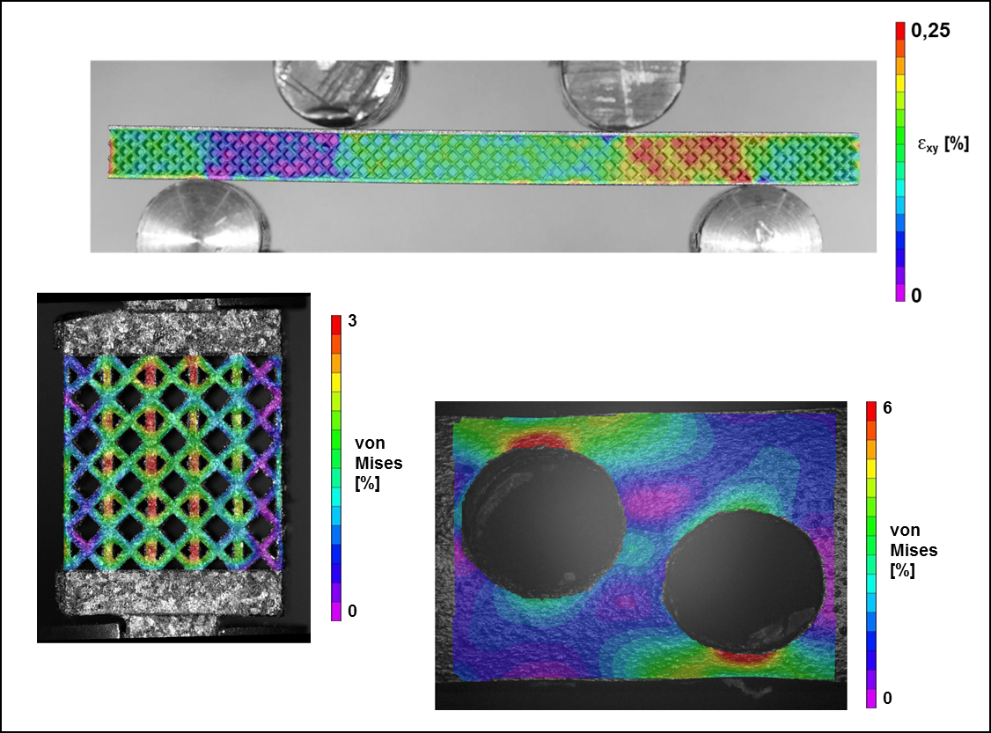Digital Image Correlation
Digital Image Correlation (DIC) technology enables researchers to determine local strains, and thus the locally occurring stresses, in a component under loading. The technology is based on an optical process in which images are taken of a specimen surface in its initial condition, as well as at multiple stages during and/or after deformation. The strain distribution can then be calculated based on the displacement of individual “speckle” points/patterns on the surface of the part. Similar to Finite Element Analysis (FEA), the visualization of the strain distribution is color-coded, allowing areas affected by design or material-related defects to be identified easily and intuitively. In addition, conclusions about deformation due to micro-structural factors can also be drawn based on the results. Depending on the depth of resolution required, various optical imaging techniques can be used.
Optical Imaging Techniques
- DSLF Nikon D3200
- Digital (optical) microscope
- Confocal microscope
- Scanning electron microscope
Applications
DIC can be used in combination with the majority of the testing equipment available at the LWK, offering a method of generating visualizations of specimen loading under varying load conditions. The following list gives possible examples of applications where DIC could be incorporated:
- Visualization of crack propagation under cyclical load (fracture mechanics)
- Load distribution in complex light-weight structures
- Early damage detection under cyclical load
- Examination of matrix/fiber bond quality in compound materials under load
- Visualization of stress-induced phase transformation
- Detection of microstructural inhomogeneities

